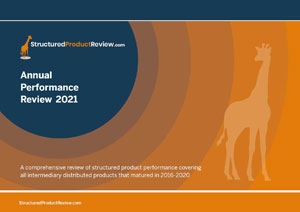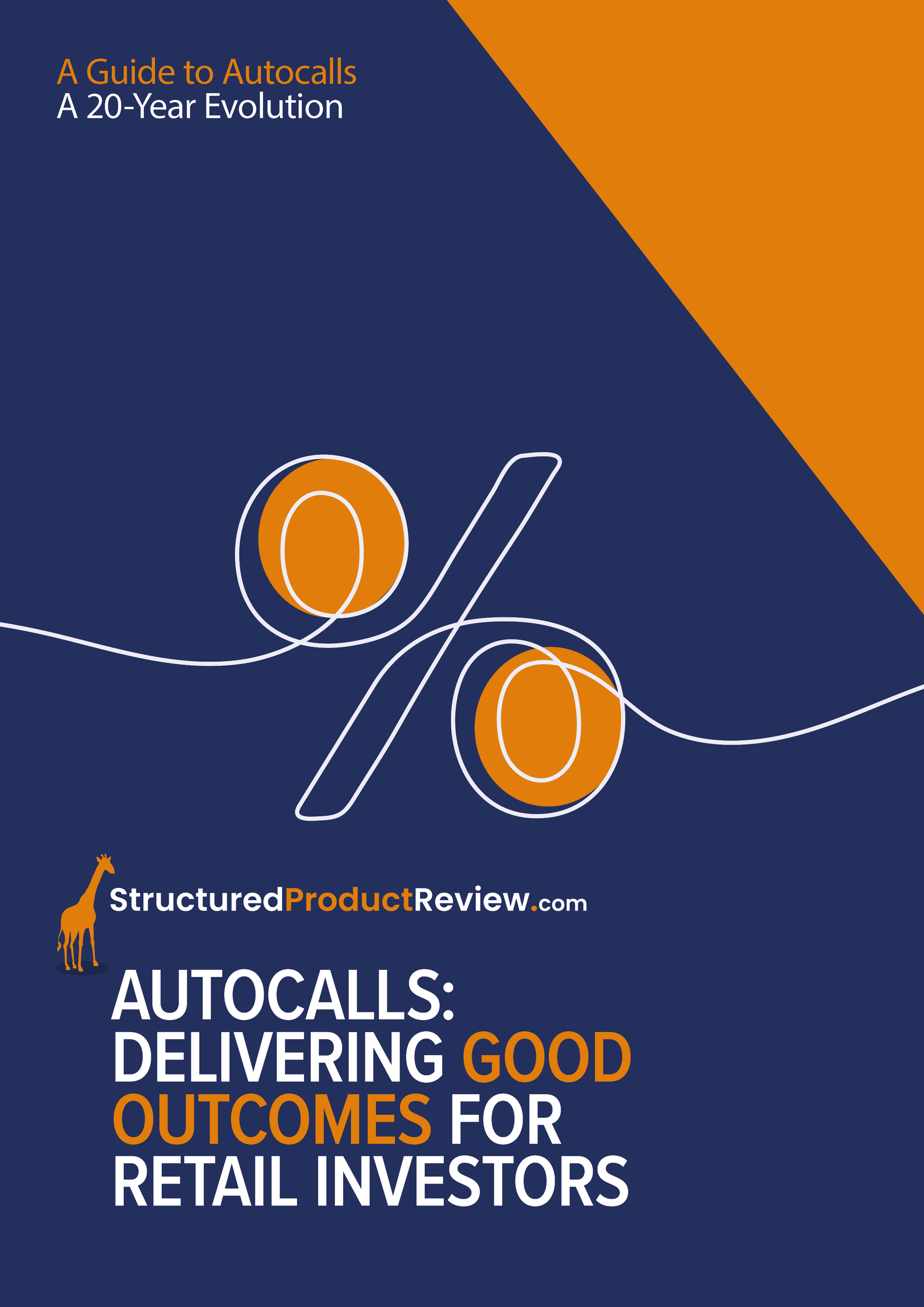Max Darer, Lowes Financial Management, 23/08/2023
Structured products have commonly relied on traditional equity indices as their underlyings. In the UK retail market, the FTSE 100 has historically taken centre stage, although the EURO STOXX 50 and S&P 500 indices from our European and American counterparts have also made notable appearances. These indices employ a market-capitalisation weighting methodology, assigning more significance to companies with larger market capitalisations within the index. It's important to note that these indices function as price return indices, omitting the incorporation of dividends distributed by the constituent companies.
The performance of structured products are based on the price of the underlying index, in a pre-defined manner that will return a gain for example if at the end of the term the FTSE 100 Index is greater than its initial level. The holder of such products (in isolation) is therefore less concerned with the dividend payments paid out by companies within the index, since this return is ‘baked’ into the pre-defined return of the structured product. This, however, necessitates counterparties having to anticipate the dividend yield across the investment's lifespan, shaping the foundation for terms governing the issuance of new structured products. The turbulence instigated by the Covid-19 market crash served to unsettle these anticipations.
Over the Covid pandemic, companies naturally diverted to cutting costs and so sharply cut payments to their investors, dividend yield expectations dramatically fell due to the massive uncertainty prevalent in the system. In turn, banks were forced to build in greater margin to account for the dividend yield uncertainty when pricing FTSE 100 linked structured products. The result were coupons at significant discount to pre-pandemic levels and a consequent resurgence in custom indices to solve the problem.
The FTSE CSDI (Custom 100 Synthetic 3.5% Fixed Dividend Index) was introduced in 2020 as a consequence of the impacted dividend yields during Covid. Based on a synthetic FTSE 100 Index but replicating the total return index by factoring in dividends, an annualised fixed 3.5% is then deducted on a daily basis based on the historical FTSE 100 dividend yield. This means the CSDI will perform almost identically to the FTSE 100 if the actual dividend yield from the 100 companies is at 3.5%. If the actual yield falls below 3.5%, the FTSE 100 will outperform the CSDI and vice versa. The result is an index that is extremely closely correlated to the FTSE 100 but on which many issuers can improve terms offered to the investor due to one of the uncertainties being removed from the bank’s side of the equation, along with corresponding margin that would otherwise be incorporated to cover the bank against a wide range of scenarios.
Custom indices existed prior to the pandemic as underlying in structured products with the unpredictable dividend aspect being just one rationale behind them. The FTSE 100 EWFD (Equal Weight Fixed Dividend Custom Index) created in 2017 provides the counterparty with a fixed and therefore predictable ‘dividend stream’ and does so whilst providing investors to a different method of exposure to the FTSE 100 being the equal weighting. This of course gives greater relative weightings to the smaller of the top 100 giants with the same percentage exposure applied to the behemoths. In this instance, rather than the dividend being a percentage that equates to a historic yield, a fixed dividend of 50 points is removed per year when calculating the daily levels, which at launch was equal to 5% of the starting 1000-point level. At this level of ‘dividend decrement’ substantially more than the natural yield is made available for the structurer to translate into potential upside.
The FTSE 100 EWFD is exclusive to Société Générale but in 2022 a variation on the theme was introduced for others. The FTSE 100 EW45 (Equal Weight 45 Point Decrement Index) as the name suggests, also tracks the FTSE 100 shares on an equally weighted basis, however an annualised 45, rather than 50-point decrement is removed on a daily basis.
The FTSE 150 EWDR (Equally Weighted Discounted Return Custom Index) has been in use for over seven years. By including the next largest 50 shares listed on the London Stock Exchange it further diversifies exposure on an equally weighted basis. The ‘dividend decrement’ in this instance is at 5% and as such, substantially more than the dividend yield of the relevant shares, particularly on an equally weighted basis and as such, again present the structurer with more with which they can enhance the terms offered to the investor.
Rebalancing of equally weighted indices typically occurs quarterly and whilst this can help reduce volatility it also serves as a ‘buy low, sell high’ principle depending on performance of the constituents when all are reset to the allocated percentage exposure. All custom indices we have seen utilised as structured product underlyings have different nuances, often to solve similar issues albeit to varying degrees.
A breakdown summary of the main similarities and differences between the indices mentioned above are as below.
|
FTSE CSDI (Custom 100 Synthetic 3.5% Fixed Dividend Index) |
FTSE 100 Fixed Dividend Equal Weight Custom Index |
FTSE 150 Equally Weighted Discounted Return Custom Index |
FTSE 100 EW45 Point Decrement Index |
|
Based on the same 100 shares with the same weightings as FTSE 100 but including dividends |
Based on same 100 shares as the FTSE 100 but on an equally weighted basis and including dividends |
Based on the 150 largest shares listed on London Stock Exchange, on an equally weighted basis and including dividends |
Based on same 100 shares as the FTSE 100 but on an equally weighted basis and including dividends. |
|
A 3.5% fixed annualised dividend is removed on a daily basis |
A fixed annualised dividend of 50 points is deducted from the index on daily basis (equivalent to 5.63% at time of writing) |
A 5% fixed annualised dividend then discounted on a daily basis |
A 45-point fixed annualised deduction from the index on daily basis (equivalent to 6.03% at time of writing) |
|
Utilised by Morgan Stanley, Citigroup, Goldman Sachs, BNP Paribas |
Utilised by Société Générale |
Utilised by Morgan Stanley, Citigroup, Natixis |
Utilised by Citigroup, Goldman Sachs |
Structured investments put capital at risk
Also in this section
- 2,000 and counting
- Q2 2024 maturity results
- 20 years of autocall maturities
- Product focus - June 2024
- Fixed income or interest?
- Maturities of the month - May 2024
- The barrier debate - revisited
- Product focus - April 2024
- Maturities of the month - April 2024
- Time to call
- I don't believe markets are ever too high for Structured products!
- Notes on counterparty exposure
- Return of Nikkei
- Q1 2024 issuance
- Q1 2024 maturity results
- Structured Products – AAAAAGH!
- Hop in CIBC
- Re-enter Santander
- How to build a financial fortune - revisited
- Issuance in 2023
- Where's the risk?
- Questionable offerings
- Challenging the case against structured products - 'Loss of dividends'
- Navigating the investment landscape
- Challenging the case against structured products - Counterparty risk
- 6-year autocalls approaching final destination
- 1,750 FTSE capital at risk autocall maturities
- The leopard that changed her spots
- Q3 2023
- Challenging the case against structured products - Keydata
- Dilemmas for UK IFA's and the unique role of Structured Products
- 'High charges'
- Precipice bonds
- Intro
- FTSE 100 Contingent Income
- Indexing the indices
- Something different
- Investing through volatility
- 100 10:10s
- The best or worst?
- The 10%/25% 'Rule' that never was
- Structured products and the yield curve
- Fixed income: Capital at risk?
- Prospects for UK inflation - and fun with A.I!
- The Barrier Debate
- More Deposits for now
- Last of the Americans
- What if?
- Time heals all wounds, we hope...
- How to diversify portfolios using structured products?
- The Proof Is In The Pudding...
- Debunking Structured Misconceptions
- 1,500 FTSE Capital-at-Risk Autocall Maturities
- Q3 2022 Maturity Results
- What do we prefer?
- Deposits vs Capital ‘Protected’
- There’s time yet…
- Where did you invest your clients?
- A Six-Month Reflection
- Return of the Rev Con
- Happy 2nd Birthday FTSE CSDI
- Q2 2022 Maturity Results
- The best and worst yet still the best
- Critique my Suitability - Mariana 10:10 Plan June 2022 (Option 2)
- 10/10 for 55 10:10’s
- Q1 2022 Maturity Results
- 'How to build a financial fortune': a follow up
- Critique my Suitability - Mariana 10:10 Plan April 2022 (Option 2)
- 2021 Capital-at-Risk Autocall Maturity Review
- An unwelcome return...
- CSDI's First Birthday
- Bon Anniversaire
- Introducing the FTSE Custom 100 Synthetic 3.5% Fixed Dividend Index
- Q3 2021 Maturity Results
- Critique my Suitability - Mariana 10:10 Plan October 2021 (Option 2)
- Blurring the lines...
- Beware of false knowledge; it is more dangerous than ignorance
- Good news, bad news...
- Certainty is Certainly a Benefit
- Critique my Suitability - Mariana 10:10 Plan September 2021 (Option 2)
- A Twenty-Year Progression
- Q2 2021 Maturity Results
- Nine 8:8s Post Positive Returns in Falling Markets
- Critique my Suitability
- Q1 2021 Maturity Results
- Morgan Stanley’s Marvelous Maturity Medley
Current Products
We review the UK's retail structured investment sector, providing pertinent support for Professional Advisers and relevant research tools.
View all ⟶


